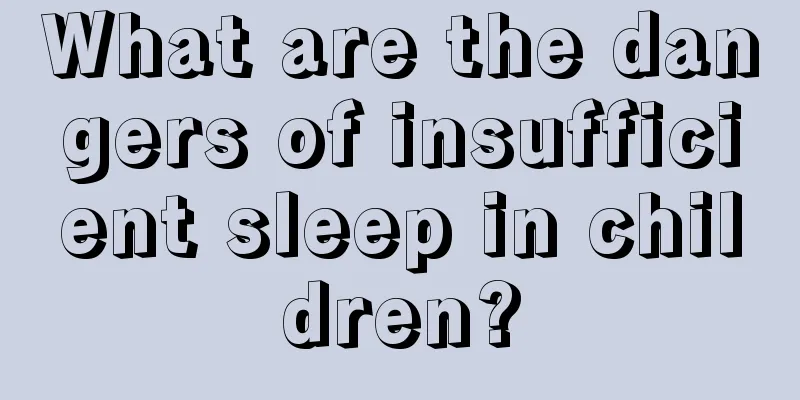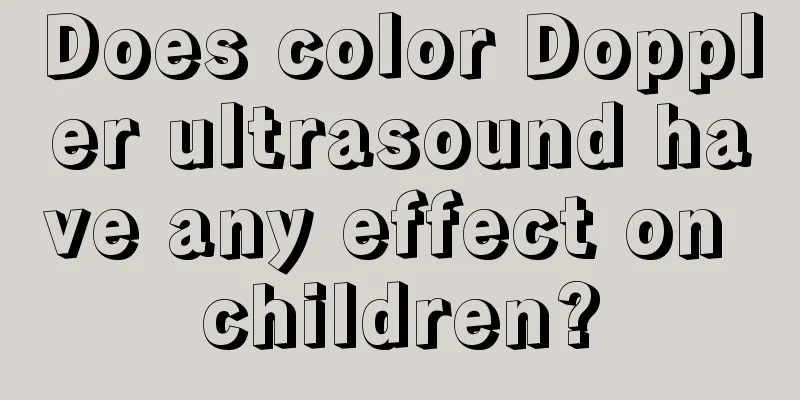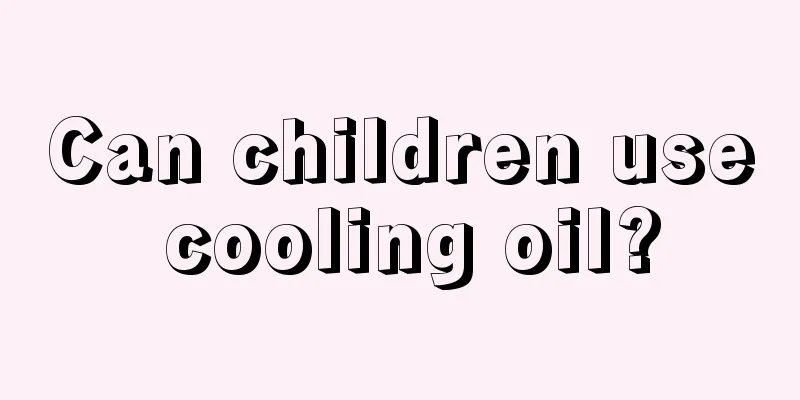First aid and nursing care for children with high fever convulsions

|
When children are very young, if adults do not take good care of them or do not know how to take care of them, the children may sometimes become sick. Children have poor resistance and an imperfect immune system, so a high fever is a common symptom when children are sick. When a child around you gets sick, has a fever, or has a high fever convulsion, what should we as adults do? What can be done to help children recover from a high fever? 1. Keep the airway open. Immediately unbutton the child's collar, let him lie flat without a pillow, with his head tilted to one side (parents should never hug, press or shake the patient). Clear the secretions from his mouth and nose, and use a tongue depressor wrapped in gauze to fill the space between his upper and lower teeth to prevent him from biting his lips and tongue. If necessary, use tongue forceps to pull out the tongue to prevent it from falling back and causing suffocation. 2. Improve tissue hypoxia. Children with convulsions suffer from tissue hypoxia due to poor breathing and increased oxygen consumption. When the brain tissue is hypoxic, the permeability of cerebral blood vessels increases, which can cause brain tissue edema and worsen convulsions. The degree and duration of hypoxia have a certain impact on the occurrence and prognosis of convulsive brain injury. Therefore, oxygen inhalation should be given in time and the oxygen flow should be appropriately increased to quickly improve the tissue hypoxia. 3. Acupuncture for antispasm Acupuncture for antispasm is a simple, cost-effective and effective method for antispasm. Commonly used acupuncture points: Ren Zhong, Hegu, Shao Shang, Shi Xuan, etc. 3. For anticonvulsant drugs, convenient, fast-acting and low-toxic anticonvulsant drugs should be selected, and the dosage should be sufficient so that the child can achieve the goal of alleviating or stopping convulsions in a short period of time. If necessary, two drugs can be used in combination, such as diazepam, 10% chloral hydrate, chlorpromazine, phenobarbital, etc. 4. High fever can further aggravate convulsions, increase brain oxygen consumption and cause cerebral edema, so the body temperature should be controlled below 38°C. Drugs commonly used to reduce fever include chlorpheniramine and antonidine. The author feels that physical cooling is better than drug cooling, it is faster, relatively safe, and can be used repeatedly for a long time. The methods of physical cooling include warm and wet compresses, warm water baths, and ice packs applied to large blood vessels on the surface of the body. 5 Dehydration, diuresis, and reduction of intracranial pressure. Continuous and frequent severe convulsions are often caused by cerebral edema. Therefore, the appropriate use of dehydrating agents, reducing intracranial pressure, and controlling cerebral edema are also effective measures to treat certain severe convulsions. The following are commonly used: 20% mannitol, furosemide, dexamethasone, hypertonic glucose, etc. 6. Strengthen basic nursing care (1) Closely observe the child's consciousness, body temperature, pulse, respiration, and blood pressure changes to promptly detect the progression of the disease. (2) Keep the ward quiet and the lighting soft. Avoid noise and bright light stimulation. The room temperature should be between 24℃ and 26℃, and the humidity should be 65%. (3) All treatment and nursing operations should be performed gently and centrally, and the movement of the child should be minimized. (4) During a seizure, the patient is prohibited from eating or drinking. Wait until the condition stabilizes before feeding by breastfeeding or nasogastric feeding. Learn and master the above methods to help children dissipate heat, so that you will not feel flustered and at a loss when your child has a febrile convulsion. In addition, in order to protect children and prevent them from having febrile convulsions, we also need to carefully study some common knowledge and manifestations of febrile convulsions in children and do a good job of prevention. |
<<: How to overcome phobia after a child is frightened?
>>: Causes and manifestations of delayed language development in children
Recommend
Children keep blinking when watching TV
Careful parents will observe a problem: their chi...
How to prevent children from being picky eaters
Current medical research shows that if a child is...
What to do if your newborn has a lump on his chest
When a newborn shows any abnormalities, a physica...
Why does my four-month-old baby's thumb turn inward?
After having a baby in the family, the baby's...
How to treat pharyngitis in children? These methods deal with
If you find that your child has pharyngitis, it i...
What should I do if my baby has a fever, convulsions, or seizures?
We all know that if a child has a high fever, it ...
What causes dark circles under baby's eyes?
Speaking of dark circles, everyone knows that it ...
What are the symptoms of chronic pharyngitis in children?
Chronic pharyngitis is a common throat disease. W...
Clinical manifestations and etiology of neonatal toxic erythema
To everyone, erythema toxicum neonatorum. What is...
What should I do if I want to change the milk powder for my baby?
Many parents don’t know much about infant care at...
These folk remedies are effective in treating children's bedwetting
Bedwetting is a normal phenomenon. Many children ...
Why do I still have a fever when the rash appears?
The rash on children is also called roseola infan...
Symptoms of hernia in boys
Many boys are born with hernia, which is medicall...
Newborns have brain hypoxia, parents should pay attention!
Neonatal cerebral hypoxia is a very serious condi...
How long does it take for a newborn to shed tears?
For many people, crying is a very simple thing in...









